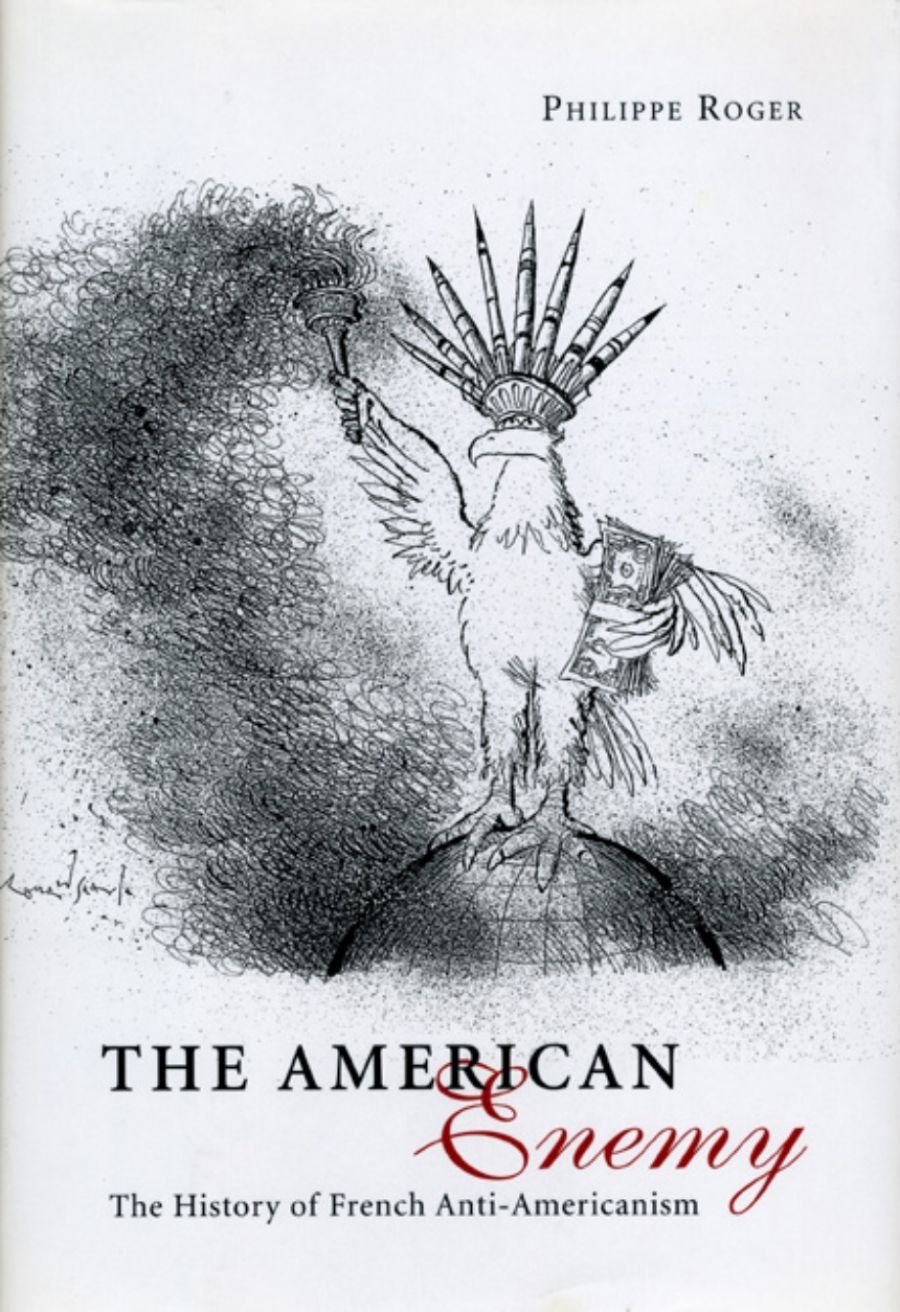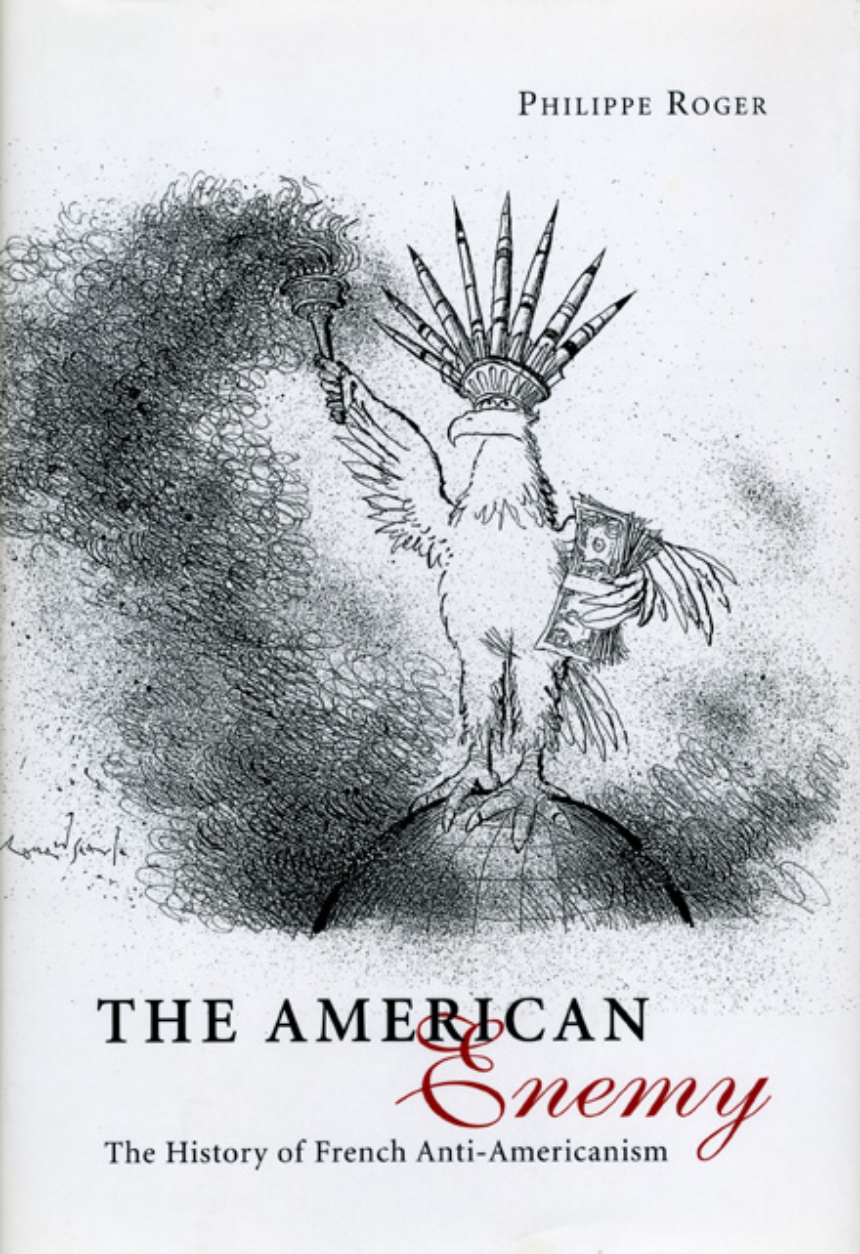
- Free Article: No
- Contents Category: International Studies
- Review Article: Yes
- Article Title: Well-nourished hatred
- Online Only: No
- Custom Highlight Text:
As an eyewitness to the terrorist attack on the World Trade Centre in September 2001, Philippe Roger was sickened when the America-hating Jean Baudrillard announced his ‘prodigious jubilation’ at the event. Sickened, but not surprised. Roger understood that Baudrillard’s crassness was rooted in a long French tradition of anti-American discourse.
- Book 1 Title: The American Enemy
- Book 1 Subtitle: The history of French anti-Americanism
- Book 1 Biblio: University of Chicago Press, $69.95 hb, 518 pp
- Book 1 Cover Small (400 x 600):

- Book 1 Cover (800 x 1200):

With congenial verve, impressive erudition and a tonic dose of irony, The American Enemy traces the development of this discourse from origins that reach back to the eighteenth century through to the present. Embryonically, the syndrome can be found in thinkers of the Enlightenment, including the venerable Buffon, who invested his very considerable scientific authority in assuring his readers that the American New World had a shocking climate that resulted in stunted plants, shrunken animal life and degenerate human beings. Through the nineteenth century, the number of voices joining the choir of negativity expanded, as its themes and motifs multiplied: Stendhal, nourished on Frances Trollope’s Domestic Manners of the Americans (1832), imagined America as the epitome of provincial tedium; Baudelaire, unforgiving of a nation that had so badly treated the great Edgar Allan Poe, castigated American visions of material progress as a terrifying threat to the future of humanity. The threshold marked by the Spanish–American War of 1898 was of particular importance. Until that time, French anti-American sentiment had been sporadic, ‘a slow sedimentation of discourses’. Now it was given a political and intellectual focus that it would never lose, and it demonstrated its capacity to create consensus across France’s own ideological divides. Anti-Americanism became one of the things that held France together.
Roger is persuasive in showing that anti-Americanism has become a permanent and constitutive feature of France’s self-definition. Rather than as a consistent ideology, it is posited as a kind of discursive core around which different French preoccupations have clustered at different times: anxieties about democracy or Anglo-Saxon racial superiority in the nineteenth century; worries about waning colonial power, cultural prestige, economic vitality; world influence throughout the twentieth century, and especially during the interwar period that Roger sees as the ‘unsurpassed crest’ of the anti-American tradition.
Is Roger as successful in persuading his readers that this anti-Americanism is fundamentally independent of the realities of American life or America’s real socio-political and cultural impact on France? Sebastian Faulks, in his review for The Times, believes so, warning Francophile readers that this is a ‘deeply dispiriting book’. I am not so sure. Roger himself provides numerous examples of US actions that have produced legitimate anxiety or hostility in Europe, from the Spanish–American War, to the crippling exacting of repayment of war debts in the 1920s and 1930s, to the dumping of old films and superseded consumer goods into the French market after World War II. While it is not hard to see how such frictions contributed to strengthening underlying currents of anti-Americanism, or indeed that the conflicts may have been complicated by that insidious tradition, it is not so easy to accept that they are simply products of it. Similarly, it stretches credibility to suggest that the almost exclusively communist anti-Americanism after World War II derived purely from the French tradition, rather than from a more complex set of pressures, including those emanating from the Kremlin, which was very much in control of the French Communist Party’s pronouncements at that time.
The original French subtitle of this book styled it as a ‘genealogy’ of French anti-Americanism. The English subtitle, ‘The History of French Anti-Americanism’ (my emphasis) goes a lot further, and in doing so oversteps the bounds of plausibility. Roger’s methodology is not historical in any strict sense. He does not claim archival sources, and he does not engage in historical triangulation of assertions, facts and figures. He selects his sources carefully, but he relies on ‘established’ historical accounts such as those of René Rémond for the background of his own exploration, which is essentially based on semiotic analysis of documents that can be classified as ‘cultural’: fiction, essays, polemics.
Roger has his own bêtes noires: he has a hearty dislike of the great writers of France’s Catholic tradition – Claudel, Bernanos and Mounier; he also has it in for Sartre and de Beauvoir, as well as for the now-forgotten but once much-admired André Siegfried. But he is brilliant in showing how the French, since the very beginning and with deplorable consistency, have got America wrong. They supported the wrong side in the American Civil War; they were sure that American football, with its immodest cheerleaders and vigorous physical exchanges, signalled the death of civilisation; they could not cope with America’s immigration policies or the fact that trans-Atlantic socialism failed to gell.
Sharon Bowman’s English text reads with a fluidity and energy every bit as lively as the original. The American Enemy merits a place of honour among the several fine books that have sought to make sense of one of the most puzzling – and, for outsiders, often entertaining – cases of cultural conflict in today’s world: books such as Richard F. Kuisel’s Seducing the French: The Dilemma of Americanization (1993) and Richard Pells’s Not Like Us: How Europeans Have Loved, Hated, and Transformed American Culture Since World War II (1997). Roger brings to the basic issues an unparalleled temporal scope, a distinctive choice of materials and a wealth of colourful anecdotes. It is not a work that will make peace between the two sides, but it is very stimulating.


Comments powered by CComment